Midwife nursing, often sidelined by modern medicine, remains alive and well for women who value holistic care before and after birth
By Vatsala Sperling, New York
Many women believe they have no option but to rush to the hospital to give birth, then have the child snatched away to the nursery. This is a modern phenomenon. A more holistic approach is available and preferred by others. Ratnavathy Sivalingam-Chandrasegaran, a Malaysian mother with her first baby, hired infant-care nurse Meena to help nurture her infant boy, Kiranapathi. Observing Meena’s handling of her baby, Ratna was impressed that this ancient knowledge has survived the centuries through women who have devoted themselves to infant care. Ratna hopes her experience will inspire other mothers, and Meena agreed to an interview for this article.
I was delighted when HINDUISM TODAY asked me to help bring Ratna’s concept into article form. I had just read about the passing of a famous obstetrician who had inspired me as a young girl in Chennai. In 1974, at age thirteen, I read a newspaper review of Birth without Violence. The author, Dr. Frederick Leboyer, was a French obstetrician who wanted to restore natural dignity to human birth.
I ran to my mother, asking, “If we have been having babies since the beginning of time, why do women go to hospitals to give birth?” Mother answered, “Hospitals are a new phenomenon. Even though we live in present times, we can still follow our tradition and culture.” In caring for our family, she placed strong emphasis on Tamil, Sanskrit, ayurveda, a vegetable garden and a whole-food diet.
Mother told me, “Your grandmother was born at home in Madurai. As a young girl in the late 1800s, she observed home births. Madras Medical College was founded in 1885 and Christian Medical College in 1907, and their graduates worked for the British. But Western medical science was still young. Our native ayurvedic, unani and siddha physicians took care of serious illnesses, epidemics and accidents, while midwives tended to women during pregnancy and childbirth. For 45 days after delivery, midwives visited the house to care for mom and give the newborn a daily massage and bath.”
Mother elaborated, “Nuclear families were unknown in those days. Multi-generational extended families and the entire neighborhood helped new mothers, but midwives were the stars around childbirth. Their training began at a tender age by assisting senior midwives. They learned to birth breech babies, twins and triplets, supervise stillbirths, cut the cord and dispose of the afterbirth. They learned to handle various complications and unexpected events associated with childbirth, like hemorrhage, stalled labor, cord around neck, and low-birth-weight babies. They knew the signs that showed whether or not the baby was thriving at birth. They learned about hygienic and sanitary practices, food, rest, breathing and pushing techniques for the mothers. They tended to newborns in birthing rooms dimly illuminated only by oil lamps.
“Midwives never discriminated on the basis of religion; they conducted births in Hindu, Muslim and Christian homes. They were respected and paid well in cash and kind. They always responded to emergencies, any time of day or night. But when I was born in 1921, women were being told that hospital births were safer, and many were becoming afraid to give birth at home. Luckily, your grandmother found a good midwife and birthed me at home. She firmly believed that birth is a natural process that does not require medicalization. She was there for the birth and nurture of all six of my children, staying with me for 45 days each time. She trained me and told me to pass along this information to my own daughters and any woman willing to learn.”
I watched through the 1980s as my married sisters delivered their babies at home. My mother supervised the birthing and nurturing of eight grandchildren. After I moved to the US, when I was about to give birth to my son Mahar in 1998, I also avoided medicalization and doctors. My sister Bhuvaneshwari supervised Mahar’s birth and nurture, staying with me for six months and teaching me how to care for him.
So when I was asked to help on this story, I was curious to find out what aspects of infant nurturing have survived since my grandmother’s time in the late 1800s.
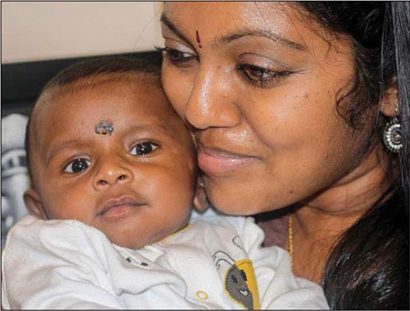
A newborn gets the best: Ratnavathy with her first child, Kiranapathi
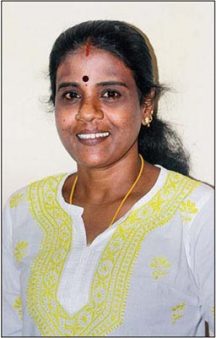
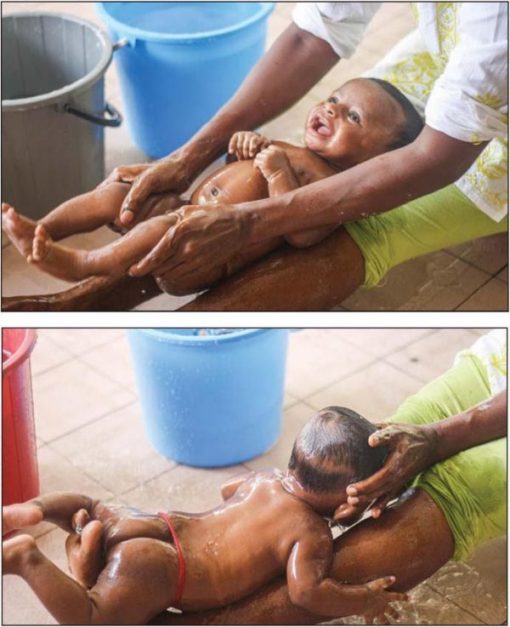
FROM INDIA TO MALAYSIA, 2017
Ratnavathy (R): Meena, please tell us about yourself.
Meena (M): I was born in Madurai and named Pandimeena. I am 45 years old, married, with two children and a granddaughter. I wanted to educate my children, so I came to Malaysia 20 years ago. I have been an infant nurturer ever since.
R: What attracted you to infant nurturing?
M: During my childhood, my grandma and mom used to do this very well. Observing them, I was interested in learning. I would bathe my neighbor’s babies, sometimes taking over from my grandmother as well. As I grew older, I was hired to do this and have been doing it from the age of 16. I did not get a formal school education. Instead, I spent all my time learning about the proper preparation of food, about the traditional medicines and infant care. This career comes from my heart and brings real job satisfaction.
R: Did your grandma train other young women for this profession?
M: Infant nurturing has been a tradition passed from one generation to the next in the same family. Traditionally, they did not train others; however, my mother encouraged me to train all who are interested.
R: Today very few people believe in traditional practices. They go to hospitals and follow the doctor’s orders. How do you continue getting this work?
M: In Malaysia, while they may give birth in the hospital, people of Indian origin believe the baby should be cared for and given baths according to traditional methods. I am called to bathe a child at home. The mother likes my work and refers me to her friends. Word of mouth keeps me going. Malaysians are modern people, but for infant nurturing they rely on traditional methods.
R: Do non-Hindus use your services?
M: Most mothers of Indian origin living here prefer this bathing process. That includes Hindus, Christians and Muslims. But I have never been asked by any Chinese or Malay Muslim mothers.
R: Are you present when these mothers give birth?
M: No. Three generations ago, women conducted home deliveries, but today the babies are born in hospitals.
R: Before birth, do you visit the mothers and advise them about various aspects of the upcoming birthing process?
M: Today people rely on their doctors for almost everything. But they will ask me about their diet and any issues they may face during pregnancy. Some women get swollen legs during the last weeks of gestation. If asked, I suggest that they drink hot water with some butter mixed in. I also tell them to drink water boiled with cumin seeds. These drinks help reduce swelling.
R: What do you say for diet?
M: Before delivery, there are no food restrictions. I ask mothers to eat well-balanced, healthy, fresh foods, and to drink plenty of water to avoid constipation. Some pregnant women vomit whatever they eat or drink, and then stop eating for fear of vomiting. I encourage them to eat simple foods in small quantities. Fasting during pregnancy will adversely affect the growth of the baby. I recommend interesting and appetizing foods. For proper growth and development of the fetus, mothers should take plenty of curry leaves, not just as a garnish. The leaves should be washed, sun-dried and powdered with pepper and cumin seeds. This powder and some ghee are mixed with rice and given with meals. They should eat lots of okra, gotu kola and greens. Milk and egg should be given to the expectant mothers. Vegetarian mothers should make sure to get sufficient protein from legumes, nuts, seeds and dairy. I also advise that they exercise and stay active till the due date. Exercise and good nutrition are key to birthing a healthy child. Much of this is pure common sense, based on the traditional knowledge of foods and body movement.
R: What about sleep and rest?
M: Before delivery, pregnant woman can sleep whenever necessary. But after delivery they have to care for a child. They should make it a priority to sleep whenever the baby is sleeping. Sometimes new mothers do not do that. When the baby is sleeping, they do household chores or care for older kids, and they do not get the rest they need. Lack of rest makes mother cranky, and that affects the baby.
R: With an unplanned pregnancy, the mother can feel depressed, afraid and tied down. What do you tell such women?
M: I do understand that not all women are happy about their pregnancy. I encourage them to remain hopeful regardless of their circumstances. They have to at least try to have a positive attitude for the baby’s sake.

MOTHER’S MILK
R: What is your advice for lactating mothers?
M: Once the baby is born, the mother must follow some dietary restrictions in order to reclaim her pre-pregnancy weight and figure, become strong and fit, and sustain lactation for the growing baby for the next few months. Nursing mothers should completely abstain from mangoes and jackfruits. I have seen babies develop dysentery when mothers eat these fruits. Nursing moms must follow a strict diet for the first thirty days. However, a small amount of restricted items will be cooked into a lentil soup concoction and fed to the mother during the first 30 days to ensure that the baby does not experience negative reactions later from these foods. But then the restricted foods are avoided until the mother stops nursing.
R: Except mango and jackfruit, can lactating mothers eat other fruits and vegetables?
M: Mothers can eat oranges, papaya, guava, melons and other fruits. I ask them to avoid dark green leafy vegetables, because when new mothers eat these, the baby passes green colored stools and that makes mothers quite nervous. Mothers can eat drumsticks and moringa leaves. Greens can be re-introduced, beginning with small quantities, about a month after birth.
R: Are there other restrictions?
M: Bengal gram (garbanzo beans, chickpeas, besan flour), mochakottai (lima beans) and brinjal (eggplant) should be strictly avoided. I have seen that when mothers eat these, the baby gets eczema. I recommend only certain types of fish for the same reason. Shark, stingray and crab help lactation. For vegetarians, I recommend a daily intake of water boiled with black pepper and cumin seeds. They should have garlic and turmeric every day to build immunity, reduce inflammation and avoid infections. I also use a recipe from my grandmother and mother to prepare a special medicine, kayakalpam, at home. We dry-roast and powder 21 ingredients including cumin, black pepper, fennel, long pepper, liquorice, nutmeg, ginger and other herbs. We add garlic pulp, sesame oil and some palm sugar and make small balls that are stored in a jar for the mother to take each morning on an empty stomach. Kayakalpam is tasty and helps with digestion, gas, bowel movements, weight loss and lactation, firms up the internal organs, reduces inflammation and helps control hair loss after birth.
R: What is your breastfeeding guidance?
M: Hospitals promote bottle feeding, saying it is safe for the infant and easy for the mother. But I recommend breastfeeding, and I teach new mothers how to do it, just as I learned from my mother. Immediately after birth, the baby should be allowed to nurse and drink colostrum. This builds its immunity and helps form the attachment with the mother.
I teach women about feeding posture, hygiene, care of the breasts and how to avoid infection. It is very important to wear a clean support garment. Sometimes immediately after birth the breasts get too full of milk and become swollen, painful and hard. This pain and discomfort can be relieved by wrapping the breasts in a warm water compress, gently massaging them with warm oil and cleaning around the nipples to clear the milk ducts. Once the baby establishes a nursing routine per his hunger needs, the breast discomfort will calm down. Mothers need not be afraid. Breastfeeding also helps moms lose weight and achieve hormonal balance.

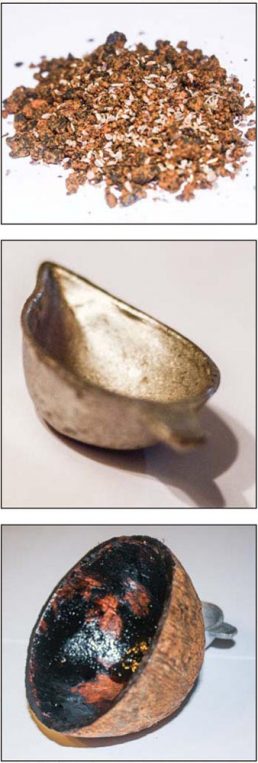
R: What do you advise do you give to mothers with less milk?
M: I recommend eating a rich diet. I ask them to stay relaxed and keep trying. For non-vegetarians, I recommend plenty of fish and eggs; for vegetarians, rasam and a chutney made from toor dal and garlic. Regarding wet-nurses, people prefer formula milk instead of engaging a wet-nurse.
R: How do you help when babies reject breast milk?
M: I ask the mother to fast and cleanse her system and to avoid stimulants like excessive teas, coffee and strong-smelling spices and herbs. Fasting eliminates toxins from the body, so her milk may become palatable to the baby. If the baby is introduced to artificial milk immediately after birth, it begins to enjoy the rich taste and easy flow of milk from rubber nipples and does not want to exert itself by sucking on the mother’s nipples. It begins to reject mother’s milk. On encountering this problem, people often turn to formula milk, but it is better to fast and keep trying. Eventually, the baby may begin to relish mother’s milk. Restrictions are lifted when the mother stops breastfeeding. Mothers who do not breastfeed do not need to follow a strict diet.
R: What do you recommend for weaning?
M: I suggest giving the child about a teaspoon of moringa-leaf juice—or make a paste of “should-not-be-named-ointment,” (sweet flag, calamus leaves and roots) with asafoetida, and apply this paste on the nipples. The baby tastes this and is turned off the breast. He can now begin solid foods. If possible, though, it is best to continue breastfeeding till the baby cuts his first four teeth. During the early days of teething, he can get upset stomach and become irritable. If he is still nursing, his suffering is reduced. Sweet flag is a very important medicine. Jatika, oak galls and sweet flag are all ground together, and the wet paste is applied on the baby’s stomach.
R: Why not call the ointment by a name?
M: It is a popular Indian belief that naming the herb makes it lose its effect. Back home, when they mix common salt in medicines, they believe if we call it by name, the medicine will not heal.
INFANT CARE
M: A healthy mother and child usually return home by the third day. I begin caring for the baby as soon as it is brought home.
R: Do you do puja or visit a temple before you visit the baby?
M: No temple visits for the baby are allowed during the first thirty days. I just lift the child and pray to our family Deity, Goddess Amman, for the health and long life of the baby and then bathe the kid. We do pass the camphor arati around the baby each day to cleanse the aura and then throw the camphor outside the home by the road.
R: What is your bathing procedure?
M: When I am called for infant nurturing, on the very first day we only use water, just warm enough to be bearable to the hand. There is no massage with oils or any other substance. From days three to seven, on alternate days the hair and body are bathed one day and then only the body is bathed on the next. We use baby shampoo and baby soap. In India we used to grind bolet beet, white turmeric and gram flour and use that for the first body bathings. For the head, only soapnut. Starting on the seventh day, we mix sesame, coconut and castor oil for the massage. Water used to soak uncooked rice and later boiled as well as a decoction of boiled betel leaves, basil, Indian borage, balloon vines, etc,. are added to the bath water. This is very beneficial to the baby’s health.
From a safe distance we let the infant breathe a little smoke from incense made with dried omam, garlic peels, benzoin and some turmeric. This improves digestion, keeps away flu and wards off negative influences. From the 16th day onward, additional herbs are added to the water. A string of tiny black-and-white beads is worn around its neck to ward of negative energy. Black and white bangles and beaded sweet flag bangles are worn on the wrists. The smell of sweet flag helps reduce vomiting. The bangles are removed one by one daily until the 30th day, after which the baby is taken to the temple.
R: Do you use any other medicines?
M: I have using a traditional medicine for years, just as my grandmother did. We take neem leaf, basil leaf and French thyme, crush them in a mortar and filter it in a clean white cloth. By giving extracts of these during the first 30 days, we make the child capable of absorbing other herbal medications later in life, like the special herbal medicine from Kerala. That is the reason that we should give Tamil medicines after birth.
R: What are some other dos and don’ts?
M: You must use lots of water during the bath. But no water is ever allowed to enter the ears and nose. This takes some skill. You can also shape the nose carefully by massaging with oil from the lower to the higher end. During the massage and bath, we stretch, flex and exercise the baby’s limbs. We also pour a bit of cold water on its private parts. We call this “shock water;” it helps allay the development of fear and makes the child adapt to temperature changes later in life. Gas, distended belly, comes from the mother eating wrong foods while nursing and needs to be corrected.
R: What are the advantages of the traditional method of placing the infant on our legs for massage and bath as compared to using a basin?
M: Babies bend, stretch and adjust to the contours of our legs. Skin contact allows us to balance the baby on our legs and focus completely so it feels nurtured, safe and warm—not cold and isolated as it does in the basin. You have to be lean and flexible to do this properly. In Indian villages even grandmothers are able to sit on the floor and bathe the baby on their legs. The care-givers must learn to take care of their own health first; only then can they help others.
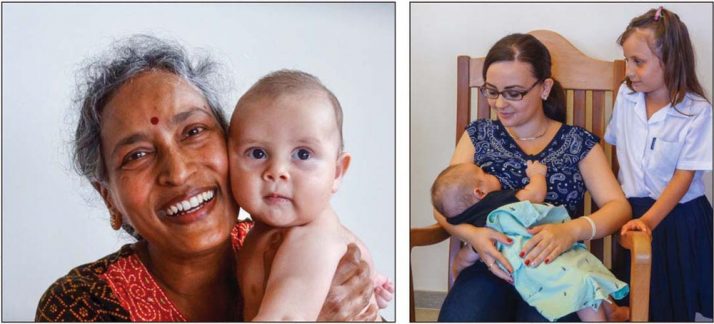
R: What about all the concerns for evil eye and bad influences?
M: Traditionally the child should not be brought outside after 6pm. My grandma said babies are so pure that they can be affected by the slightest negative influence. So many people may pass by—hygienic, unhygienic, evil eyes, evil impacts, bad vibrations, sick aura. All these affect the child. That is the reason why we adults returning home after 6pm should sprinkle ourselves with turmeric water and wash our hands and legs before coming in, and then pass a camphor flame around the child. This will ensure that negative influences do not enter the house.
R: How long do you continue nurturing?
M: I have nurtured some babies continuously for five months, for families who do not want to change the hand that is comfortable to the baby. The baby comes to know your touch. If the child has only a single caregiver for the first three months, it is less likely to contract illnesses. Others engage me for one to three months. Families have different needs. When we transfer care to another, it is mandatory to be there to help the baby adjust to the new nurse. When I am with a family, I teach one person how to nurture the infant so that he/she can continue the process when I stop working with them. It is good if they can nurture and bathe the infant daily at least until it begins to hold its own head up. Ideally, the baby should be nurtured for six months.
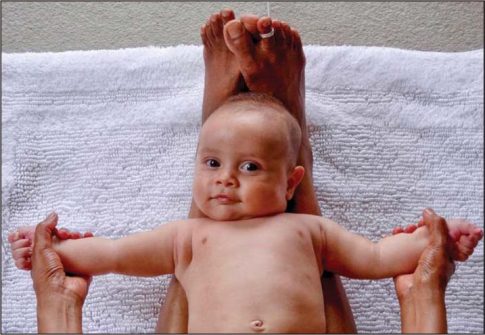
R: Do you think different regions in India have different techniques?
M: The fundamentals of infant nurturing techniques are universal, but in a big country there may be differences in a few methods. In a brahmin household, for example, the mother’s food and the baby’s first solid food will be vegetarian. Others include eggs, meat, chicken and bone broth for both mother and baby. However, both follow the same principles for nurturing the baby.
R: Are you happy in your work?
M: Yes. Just the other day, the first child I ever bathed in Malaysia greeted me. She is a college student now, and she wants me to nurture her baby when she has one. This gives me immense happiness.
R: Meena, you have so much knowledge, I am grateful to have found you. What about other women? Who teaches them?
M: Some families have elder women who teach their daughters. If they have no one to help, they call me. I contact the mother at the first trimester. I visit her from time to time and certainly by the time she is ready to deliver, I am on hand, available to offer help and support. Because almost all births happen at the hospital, complications are handled by doctors; but when the baby gets home, it needs round-the-clock care. These days many mothers live alone, separated from their mothers, and that is where I play a role as an infant nurturer.
R: What problems do we face in preserving our ancient system of infant nurturing?
M: Our system is not book-based. It is passed down from one generation to the next. Some youngsters do not want to learn from their mothers. If youngsters don’t learn infant nurturing, this art could be lost in one generation. In my view, loss of this knowledge would be a big loss for the babies themselves. If people want to go to the hospital for childbirth, that is their wish. But once the baby comes home, they can still adopt traditional ways to nurture infants. We have the time-tested methods to give babies the best start in life.
CONCLUSION, BY VATSALA SPERLING
In recent years our family—my husband, Ehud, son Mahar and I— started visiting Costa Rica to initiate a reforestation program. Until the late 1970s, this country’s agricultural society required large families. Children were needed and valued. Some women might have 17 or more children, starting at a very early age. All deliveries were at home, with no medical intervention except help from a midwife.
Young mothers were supported by huge extended families. Young and old helped care for infants. But the modernization that happened in India over a couple of centuries came to Costa Rica at a very fast pace. In just over fifty years, industrial food, TV, electricity, tap water, hospitals and universal education arrived. Educated women now work outside the home. Even in villages, kids are born in hospitals and midwives are unheard of. Consequently the knowledge of natural childbirth and infant nurture was lost in just one generation.
Having graduated from a homeopathy school, I began seeing clients in Costa Rica. A new generation of moms with hospital-born babies wanted to try homeopathy for kids. They began asking me questions about infant nurturing using natural methods. I gave a demonstration on infant nurturing as I had learned. I explained the superiority of breast milk over formula and the advantages of weaning with fresh foods cooked at home rather than packaged baby foods from the supermarket. I showed them how to massage the baby and give it a daily bath.
Thus has this knowledge, rooted in ayurveda, survived through matrilineal transmission—despite hundreds of years of Islamic and British rule in India—to reach us today. We are spreading this knowledge in Malaysia, a Muslim country, and in Costa Rica, a Catholic country.
Across centuries, locations and cultures, mothers have always wanted to know how to birth babies safely and how to nurture and sustain them during the first delicate early days and weeks on Earth. This is one of humanity’s universal needs. This is what nature intends mothers to do, so the human race can continue to thrive, like other animals and plants who do not have a medicalized birth process and who know inherently how to nurture their young. Nonhuman species live naturally and transmit their knowledge nonverbally. But we humans require instruction for sustaining the natural ways of being.
Thankfully, from grandma to ma, from Meena to Ratna, from me to a few Costa Rican mothers, and through other unsung midwives around the world who carry on this work, the ancient knowledge of infant nurturing is continuing across centuries and continents.

Fantastic article and a great read for everyone in a family on “Nurturing babies and mothers”. The highlight is bringing back our own (Hindu) traditional medicinal practices which is losing its importance due to the Western culture medical practice. Next, we should try to develop our traditional medical practices by opening training centres or development centres and bring in these long last traditions. Many thanks for the authors who have put their efforts in this article and kudos to them. Looking forward to read more of these types of traditional practices.